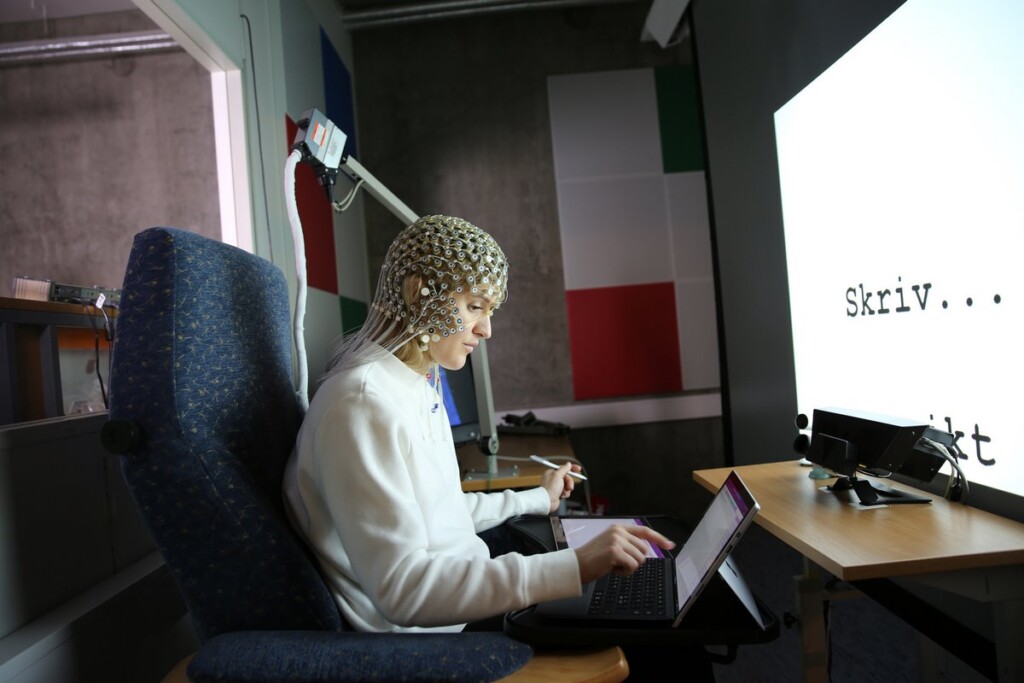
In an ever more digital world, pen and paper are increasingly getting replaced with screens and keyboards in classrooms. Now, a new study has investigated neural networks in the brain during hand and typewriting and showed that connectivity between different brain regions is more elaborate when letters are formed by hand.
This improved brain connectivity, which is crucial to memory building and information encoding, may indicate that writing by hand supports learning.
As digital devices progressively replace pen and paper, taking notes by hand is becoming increasingly uncommon in schools and universities. Using a keyboard is recommended because it’s often faster than writing by hand. However, the latter has been found to improve spelling accuracy and memory recall, if for no other reason than that pen and paper is cut off from the security of autocorrect features.
To find out if the process of forming letters by hand resulted in greater brain connectivity, researchers in Norway investigated the underlying neural networks involved in both modes of writing.
“We show that when writing by hand, brain connectivity patterns are far more elaborate than when typewriting on a keyboard,” said Prof Audrey van der Meer, a brain researcher at the Norwegian University of Science and Technology and co-author of the study published in Frontiers in Psychology.
“Such widespread brain connectivity is known to be crucial for memory formation and for encoding new information and, therefore, is beneficial for learning.”

The researchers collected EEG data from 36 university students who were repeatedly prompted to either write or type a word that appeared on a screen. When writing, they used a digital pen to write in cursive directly on a touchscreen.
When typing they used a single finger to press keys on a keyboard. High-density EEGs, which measure electrical activity in the brain using 256 small sensors sewn in a net and placed over the head, were recorded for five seconds for every prompt.
Connectivity of different brain regions increased when participants wrote by hand, but not when they typed.
YOU MAY ALSO LIKE: People Who Play Music While Studying More Likely to Have Higher GPA, Says New Poll
“Our findings suggest that visual and movement information obtained through precisely controlled hand movements when using a pen contribute extensively to the brain’s connectivity patterns that promote learning,” van der Meer said.
Observant readers might have felt a red flag go up at the mention of a digital pen and touchscreen, since the objective was to discover the neural networks underlying pen and paper writing, but the researchers are confident that the actions are the same as far as the brain is concerned.
“We have shown that the differences in brain activity are related to the careful forming of the letters when writing by hand while making more use of the senses,” van der Meer explained. Since it is the movement of the fingers carried out when forming letters that promotes brain connectivity, writing in print is also expected to have the same effect.
On the contrary, the simple movement of hitting a key with the same finger repeatedly is less stimulating for the brain.
MORE DISCOVERIES LIKE THIS: Anxiety Can Be a Habit – Which Means We Can Stop it, If We Know How
“This also explains why children who have learned to write and read on a tablet, can have difficulty differentiating between letters that are mirror images of each other, such as ‘b’ and ‘d’. They literally haven’t felt with their bodies what it feels like to produce those letters,” van der Meer said.
Their findings demonstrate the need to give students the opportunity to use pens, rather than having them type during class, the researchers said. Guidelines to ensure that students receive at least a minimum of handwriting instruction could be an adequate step.
SHARE This Important Finding In Educational Science And Development…




















